Together with…

Introduction
Microcredit has emerged as a powerful tool for poverty reduction and economic empowerment in developing countries. By providing small loans to low-income entrepreneurs, microcredit institutions (MFIs) enable individuals to start or expand their businesses, create jobs, and generate income. However, the long-term viability of the microcredit system hinges on its sustainability, which is intricately linked to the issue of loan defaults.
This article explores the factors influencing default rates in microcredit, their impact on the system’s sustainability, and strategies implemented by MFIs to mitigate defaults and ensure a lasting positive impact.
Understanding the Higher Default Rates of Small Businesses
Several factors contribute to higher default rates among small businesses in developing economies:
- Limited Resource Access: Small businesses often face challenges in accessing essential resources like finance, infrastructure, and business support services. This can hinder their ability to generate sufficient profits to repay loans.
- Vulnerability to External Factors: Small businesses are more susceptible to external factors such as economic fluctuations, natural disasters, and political instability. These events can disrupt their operations and reduce revenue, making debt repayment difficult.
- Management Experience Gap: Small business owners may lack the necessary management experience and financial literacy to effectively manage their operations. This can increase the risk of making poor business decisions leading to financial losses and defaults.
On the other hand, it’s important to recognize that these small businesses also possess unique strengths that can help mitigate these risks:
- Agility and Adaptability: Small businesses are often nimble and can adapt quickly to changing market conditions. This allows them to seize new opportunities and adjust their strategies in response to challenges.
- Local Knowledge and Community Ties: Small businesses often have deep roots in their communities and possess a strong understanding of local needs and preferences. This can give them a competitive edge and foster trust with customers, leading to higher customer loyalty.
- Resourcefulness and Innovation: With limited resources, small businesses are known for their resourcefulness and ability to innovate. They can find creative solutions to overcome challenges and develop unique products or services that cater to local needs.
While these strengths are valuable, they need to be balanced against the vulnerability factors mentioned earlier; by providing access to essential resources, training in financial management, and support in navigating external challenges, MFIs can empower small businesses to leverage their strengths and minimize default risks.

Ensuring Microcredit Sustainability Despite Higher Default Rates
Despite the higher default rates associated with small business lending, microcredit can remain sustainable if MFIs adopt appropriate strategies:
- Rigorous Borrower Selection: MFIs should implement stringent credit appraisal processes to select borrowers with a high likelihood of repaying loans. This may involve assessing their financial situation, the viability of their business plans, and their management experience.
- Ongoing Monitoring and Support: MFIs should regularly monitor loan performance and, as mentioned, provide ongoing support to borrowers to assist them in managing their businesses effectively. This could include financial counseling, entrepreneurial training, and problem-solving assistance.
- Portfolio Diversification: MFIs should diversify their loan portfolios to reduce the risk associated with individual borrowers or sectors. This can help mitigate the impact of potential defaults.
- Innovative Credit Products: MFIs can develop innovative credit products tailored to the specific needs of small businesses. This may include loans with flexible interest rates, transparency in terms and fees, longer repayment periods, or alternative collateral arrangements to avoid excessive debt burdens and offer grievance redressal mechanisms. By building trust and fostering a client-centric approach, MFIs can encourage responsible repayment behavior and create a more sustainable ecosystem.
- Leveraging Technology and Data: Technology can play a vital role in enhancing risk management and improving efficiency. MFIs can utilize data analytics to develop more sophisticated credit scoring models, streamline loan monitoring processes, and provide targeted support services to borrowers.
- Promoting Collaboration and Knowledge Sharing: Collaboration between MFIs, government agencies, and development organizations can foster knowledge sharing and innovation in the microfinance sector. By sharing best practices, developing standardized risk management frameworks, and advocating for supportive regulatory environments, stakeholders can contribute to the overall sustainability of microcredit.
Conclusion
While higher default rates pose a challenge to microcredit sustainability, MFIs can employ various strategies to mitigate these risks and ensure the long-term viability and positive impact of the system.
By carefully selecting borrowers, providing ongoing support, diversifying portfolios, developing innovative products, and enhancing risk management, MFIs can make microcredit a sustainable tool for poverty reduction and economic development in emerging economies.
Join ThePlatform to have full access to all analysis and content: https://www.theplatform.finance/registration/
Disclaimer: https://www.theplatform.finance/website-disclaimer/




